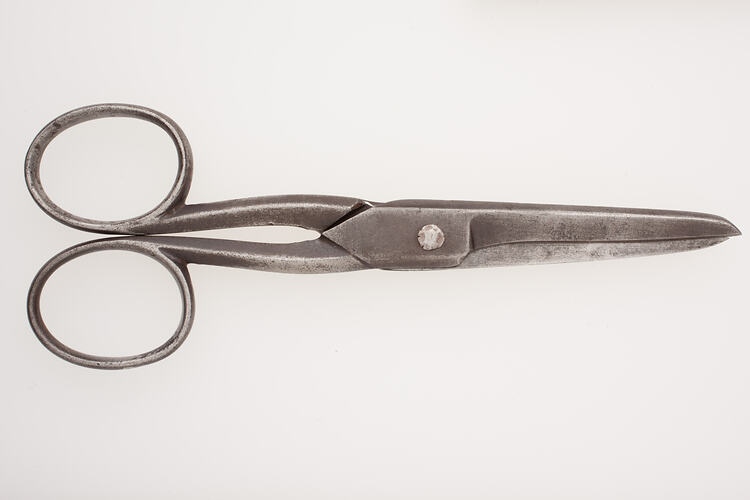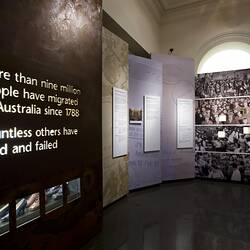Summary
Pair of scissors which originally belonging to the Teresa Xerri and then her daughter Giorgia who brought them with her to Australia when she migrated in 1938/39. Giorgia then passed them onto her daughter Rita. The scissors were used by all three women for sewing, first in Malta and then in Australia.
Giorgia Xerri was the daughter of peasants in Malta. Her brother Carmelo had migrated to Australia to secure work. When he returned to Malta to marry, Giorgia, then single and thirty one years old, accompanied him and his wife Mansueta. They came out on the Jervis Bay which sailed from England and collected passengers from Malta on 6 December 1938, and berthing in Melbourne on 6 January 1939. Her British passport was inscribed 'Island of Malta and its dependencies'. The Xerris lived in Ferntree Gully where Carmelo would be the gravedigger for over twenty years.
Giorgia came to Australia looking for a better life. She had worked as a domestic servant in Malta and had decided to try life in a new country. She was used to hard physical work and as a laundress found employment as a live-in domestic/laundress in a variety of institutions such as guest houses and boarding schools in Tremont, Box Hill and Mentone. In 1942 she married Luigi Rotin, a Maltese seafarer/coal stoker on ships who, had settled in Melbourne in 1938 and who had worked on railway construction and in quarries throughout Australia. They were introduced by another member of the tiny Maltese community who met at St Augustine's Church in Bourke Street, Melbourne. There they were married by Salesian Father Ciantar, a fellow-Maltese. They settled in a rented house in High Street North Melbourne.
During wartime Luigi was sent to work in the munitions factory in Maribyrnong while Giorgia became a housewife and mother. Although not trained as a sewer, used to a frugal life, she turned her hand to sewing and patching for her family. As time passed items of manchester and clothing increased in weight as the patches multiplied. Her daughter recalls her taking the scissors to be sharpened on day and how angry she was to find they hadn't been sharpened but shortened. She also regularly dusted and swept her parish church (for a nominal amount) and worked at the parish kindergarten for thirty five years.
Physical Description
Metal scissors, reduced in original length
Significance
This simple object symbolises the classic passing down of traditions and skills from mother to daughter over three generations and the transporting of those skills from country to country in the migration process. The scissors also represent the poverty of the original family in Malta, where everything was made and patched and objects used and reused and never discarded. This practice was then continued in Australia. The scissors are a precious memory object, of homeland and the women who used them over the generations, finally coming to rest with the granddaughter born in Australia, and also used by her.
More Information
-
Collecting Areas
-
Acquisition Information
Donation from Rita Camilleri, 21 Aug 2003
-
Place Used
-
Place Used
-
Classification
-
Category
-
Discipline
-
Type of item
-
Keywords
Brought Goods, Crafts, Immigration, Maltese Immigration, Sewing

